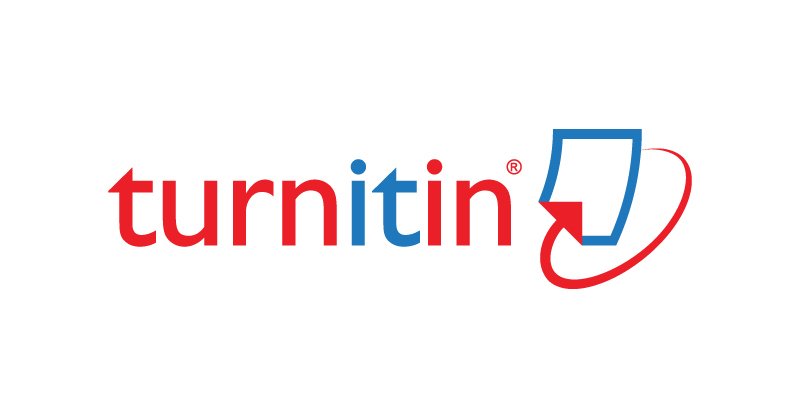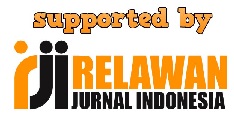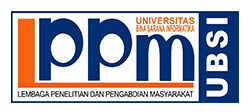Aspek-Aspek yang Mempengaruhi Regulator dalam Perkembangan Wakaf Saham di Indonesia
Abstract
Full Text:
PDFReferences
Al-Zuhayli, W. (1997). Al-Fiqh al-Islami wa Adillatuh. Dar al- Fikr.
Ali, K. M., Yuliani, M., Mulatsih, S., & Abdullah, Z. (2018). Aspek-Aspek Prioritas Manajemen Wakaf di Indonesia. AL-FALAH : Journal of Islamic Economics, 3(1), 1–28. https://doi.org/10.29240/jie.v3i1.345
Abdullah, H. (2020). Perlindungan Hukum Wakaf Saham Di Perseroan Terbatas. In UIN Syarif Hidayatullah Jakarta. https://repository.uinjkt.ac.id/dspace/handle/123456789/55772
Babacan, M. (2011). Economics of Philanthropic Institutions, Regulation and Governance in Turkey. Journal of Economic and Social Research, 13(2), 61–89.
Belemqeddem, R. (1993). Awqaf Meknes Fi’Ahd Moulay Ismail. Moroccan Ministry of Waqf and Islamic Affairs.
Borham, H. A. S. bin. (2011). Pelaksanaan Pembangunan Wakaf Korporat Johor Corporation Berhad (JCorp) : Satu Tinjauan. International Conference of Humanities, 1–13. http://eprints.uthm.edu.my/id/eprint/2035/1/Abd._Shakor_Borham_FSSW_%28ICoH%29pdf.pdf
Bråten, E. (2013). Embedded Entrepreneurship: Market, Culture, and Micro-Business Insular Southeast Asia. Koninklijke Brill NV.
Bursa Efek Indonesia. (2022). Wakaf Saham di Pasar Modal Syariah Indonesia. Bursa Efek Indonesia. https://www.badanwakafindonesia.com/eLibrary/Wakaf-Saham
Campbell, S., Greenwood, M., Prior, S., Shearer, T., Walkem, K., Young, S., Bywaters, D., & Walker, K. (2020). Purposive sampling: complex or simple? Research case examples. Journal of Research in Nursing, 25(8), 652–661. https://doi.org/10.1177/1744987120927206
Çizakça, M. (1998). Awqaf In History and Its Implications for Modern Islamic Economies. Islamic Economic Studies, 6(1), 43–70.
Dahlan, N. K., Yaa’kub, N. I., Hamid, M. A., & Palil, M. R. (2014). Waqf (Endowment) Practice in Malaysia Society. International Journal of Islamic Thought, 5(1), 56–61. https://doi.org/10.24035/ijit.05.2014.007
Embi, N. A. C., Ramlee, R., & Kassim, S. (2019). A Profile Analysis of Potential Investors in Ireit Waqf Investment Products. The 2nd International Conference on Islamic Economics, Business, and Philanthropy (ICIEBP) Theme : “Sustainability and Socio Economic Growth,” 2019, 831–839. https://doi.org/10.18502/kss.v3i13.4251
Dewi, N. (2011). Mengurai Masalah Pengembangan Sukuk Korporasi Indonesia Menggunakan Analytic Networking Process. TAZKIA : Islamic Finance & Business Review, 6(2), 138–167.
Habib, A. (2004). The Role of Zakah and Awqaf in Poverty Alleviation. Islamic Development Bank Group/Islamic Research and Training Institute.
Hanna, S. (2015). Wakaf Saham dalam Perspektif Hukum Islam. Mirzan: Jurnal Ilmu Syariah, 3(1), 99–124. https://www.academia.edu/20372031
Hassan, S. N. A. C., & Rahman, A. A. (2019). The Potential of Cash Waqf in the Socio-economic Development of Society in Kelantan : A Stakeholder’s Perspective. In New Developments in Islamic Economics (pp. 67–82). Emerald Publishing Limited. https://doi.org/10.1108/978-1-78756-283-720181005
Hasim, K., Lubis, D., & Ali, K. M. (2016). Analysis of Factors Affecting The Level of Cash Waqf Raising in Indonesia (Analytical Network Process Approach) (Analisis Faktor-Faktor yang Memengaruhi Penghimpunan Wakaf Uang di Indonesia (Pendekatan Analytical Network Process)). Jurnal Al-Muzara’ah, 4(2), 127–141. https://doi.org/https://doi.org/10.29244/jam.4.2.127-141
Havita, G., & Hakim, G. (2017). Wakaf Saham Ditinjau Dari Hukum Islam dan Peraturan Perundang-Undangan Setelah Berlakunya Undang-Undang Nomor 41 Tahun 2004 Tentang Wakaf. Jurnal Syarikah : Jurnal Ekonomi Islam, 3(1), 358–371. http://repositorio.unan.edu.ni/2986/1/5624.pdf
Hogan, N. (2016). Wakaf Saham Alternatif Model Wakaf Produktif (Silaturahmi Kerja Nasional Masyarakat Ekonomi Syariah (Silaknas MES).
Huda, N., Anggraini, D., Rini, N., Hudori, & Mardoni, Y. (2014). Akuntabilitas sebagai Sebuah Solusi Pengelolaan Wakaf. Jurnal Akuntansi Multiparadigma, 5(3), 485–497. https://doi.org/10.18202/jamal.2014.12.5036
Huda, N., Rini, N., Mardoni, Y., Hudori, K., & Anggraini, D. (2017). Problems, solutions and strategies priority for waqf in Indonesia. Journal of Economic Cooperation and Development, 38(1), 29–53. https://d1wqtxts1xzle7.cloudfront.net/53774134/Problems_Solutions_and_Strategies_Priori.pdf?1499305698=&response-content-disposition=inline%3B+filename%3DProblems_Solutions_and_Strategies_Priori.pdf&Expires=1595863124&Signature=b6B1jojdvesO8kmvYwfMtkbO5E6
Khalil, J. (2008). Standarisasi Nazhir Wakaf Uang Profesional. In Modul Pelatihan Wakaf.
Mohammad, M. T. S., & Iman, A. H. M. (2006). Obstacles of the Current Concept of Waqf to the Development of Waqf Properties and the Recommended Alternative. Malaysian Journal of Real Estate, 1(1), 27–38. https://doi.org/10.13140/RG.2.2.34379.62246
Mohsin, M. I. A. (2012). Waqf-shares: New Product to Finance Old Waqf Properties. Banks and Bank Systems, 7(2), 72–78.
Nasution, M. E. (2005). Wakaf tunai inovasi financial Islam peluang dan tantangan dalam mewujudkan kesejahteraan umat (U. Hasanah (ed.)). Pusat Kajian Timur Tengah dan Islam
Nasution, L. Z., & Aris, D. A. (2020). Konstruksi Pengembangan Wakaf Saham Dalam Rangka Mengoptimalkan Potensi Wakaf Produktif di Indonesia. Jurnal Islamic Circle, 1(1), 27–52
Orbay, K. (2017). Failure of Waqfs to Adjust Rental Rates to Prices ; Structural Impairment or Managerial Rigidity. Bulgarian Historical Review, 1(2), 18–42.
Paksi, G. M., Manzilati, A., & Ekawaty, M. (2018). Kajian Hukum Dan Implementasi Wakaf Harta Bergerak Di Indonesia: Wakaf Uang Dan Saham. ISLAMICONOMIC: Jurnal Ekonomi Islam, 9(2), 173–190. https://doi.org/10.32678/ijei.v9i2.94
Prasetyo, A. (2019). Wakaf Saham dalam Meningkatkan Investasi Saham Syariah di Indonesia. Majalah Ekonomi, 24(2), 204–210.
Rusydiana, A. S., & Devi, A. (2013). Analytic Network Process : Pengantar Teori & Aplikasi (1st ed., Issue 1). SMART Publishing.
Said, S., & Amiruddin, A. M. A. (2019). Wakaf Tunai Dan Pemberdayaan Ekonomi Masyarakat. Al-Mashrafiyah: Jurnal Ekonomi, Keuangan, Dan Perbankan Syariah, 3(1), 43–55. https://doi.org/10.24252/al-mashrafiyah.v3i1.7739
Sahal, A., Huda, N., & Setianingrum, A. (2020). Analisis Faktor Yang Mempengaruhi Masyarakat Muslim Melakukan Wakaf Saham. Ekspansi: Jurnal Ekonomi, Keuangan, Perbankan Dan Akuntansi, 12(1), 43–64
Suhaimi, F. M., Ab Rahman, A., & Marican, S. (2014). The role of share waqf in the socio-economic development of the Muslim community: The Malaysian experience. Humanomics, 30(3), 227–254. https://doi.org/10.1108/H-12-2012-0025
Sugianto, & Kusnadi, B. (2012). Perbankan Syariah dan Wakaf Produktif: Sebuah Proposal Produk Sosionomik. Researchgate.Net, 22.
Swastika, P. & Maza, R. L. (2019). Menggali potensi bursa E-Wakaf sebagai sumber pembiayaan untuk tujuan pembangunan berkelanjutan (SDGs). INSIGHT Buletin Ekonomi Syariah. Jakarta: Komite Nasional Keuangan Syariah (KNKS).
Syaifullah, H., & Idrus, A. (2019). Manajemen Pengembangan Wakaf Produktif Era Digital di Lembaga Wakaf Bani Umar. Al-Khidmat, 2(2), 5–14. https://doi.org/10.15575/jak.v2i2.5838
Thaker, M. A. M. T., & Thaker, H. M. T. (2015). Exploring the contemporary issues of corporate share waqf model in Malaysia with the reference to the Waqaf An-Nur Corporation Berhad. Jurnal Pengurusan, 45, 165–172
Triantaphyllou, E. (2000). Multi Criteria Decision Making Methods. In Multi-criteria Decision Making Methods: A Comparative Study (44th ed., pp. 219–243). Springer. https://doi.org/10.1016/b978-0-323-85851-9.00003-1
Yuliana, I., & Hadi, S. P. (2019). Model Penerapan Dan Potensi Wakaf Saham Di Indonesia. Jurnal Perspektif Ekonomi Darussalam, 5(2), 227–239. https://doi.org/10.24815/jped.v5i2.13934
DOI: https://doi.org/10.31294/moneter.v12i1.23616
Index by:
dipublikasikan oleh LPPM Universitas Bina Sarana Informatika dengan dukungan Relawan Jurnal Indonesia
Jl. Kramat Raya No.98, Kwitang, Kec. Senen, Kota Jakarta Pusat, DKI Jakarta 10450

This work is licensed under a Creative Commons Attribution-ShareAlike 4.0 International License







